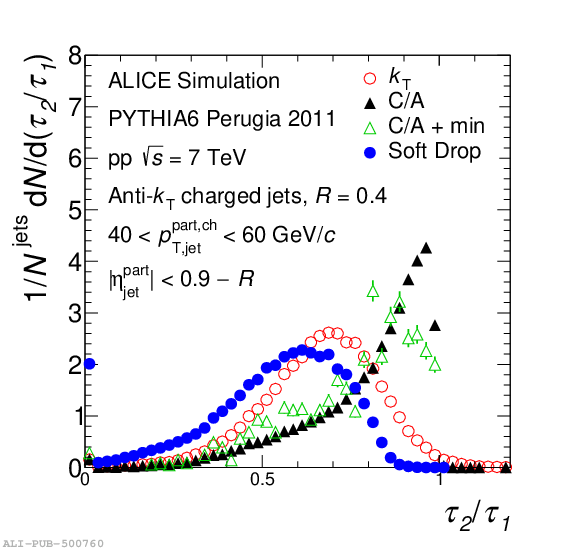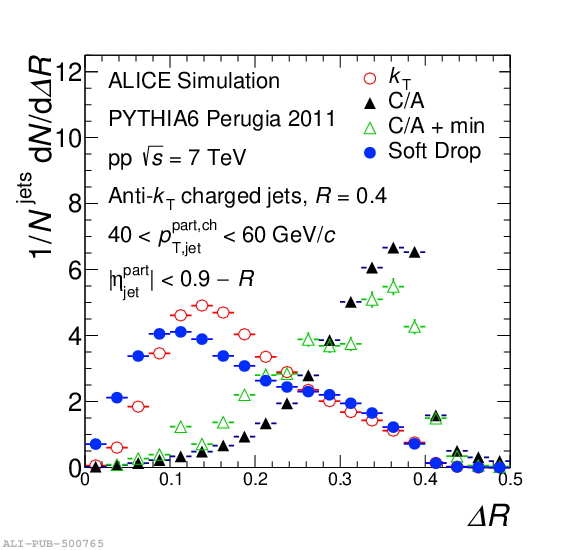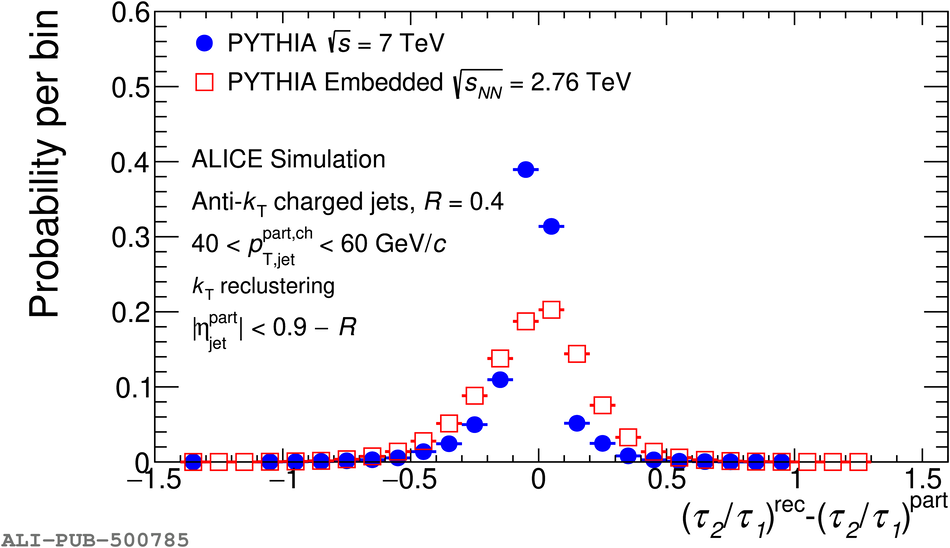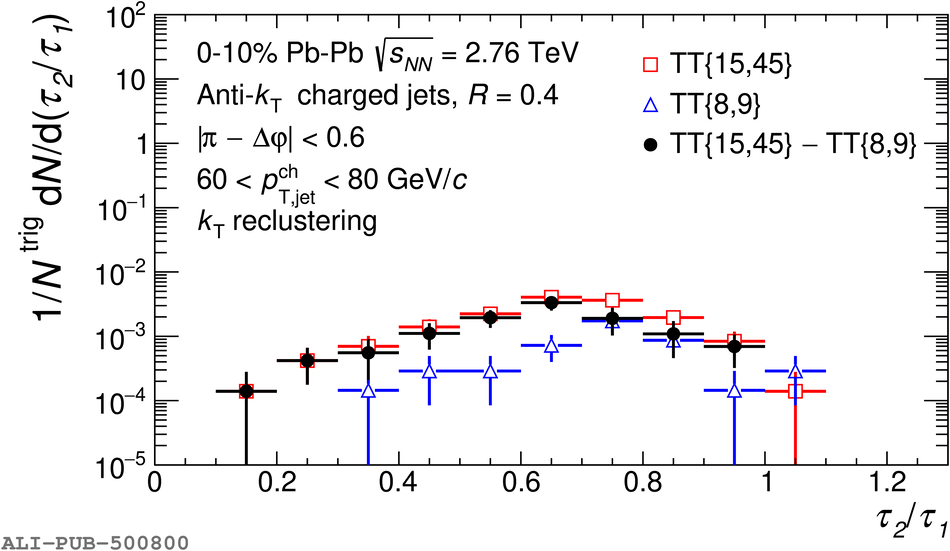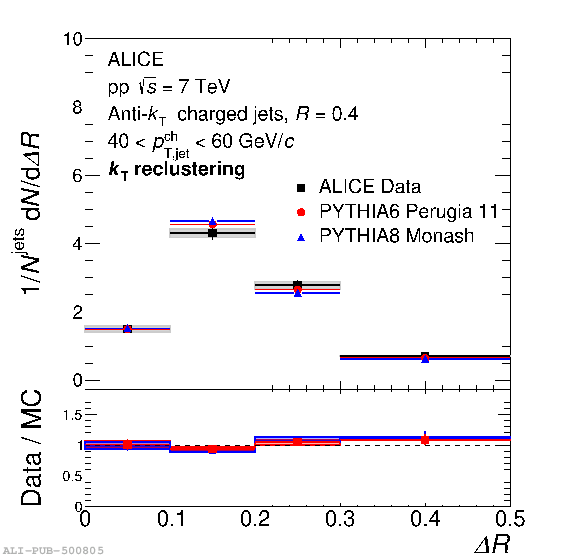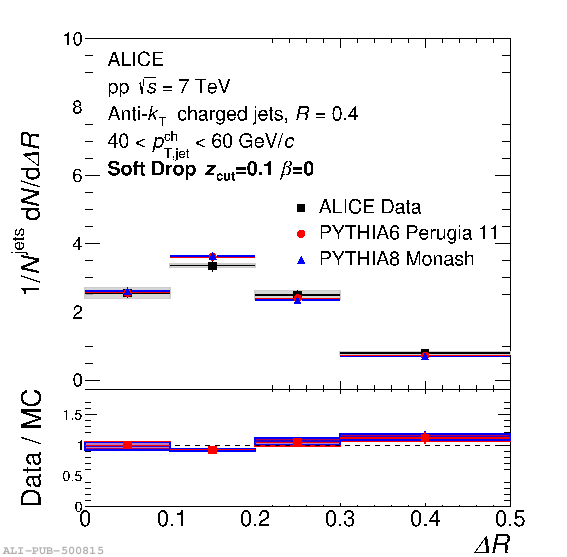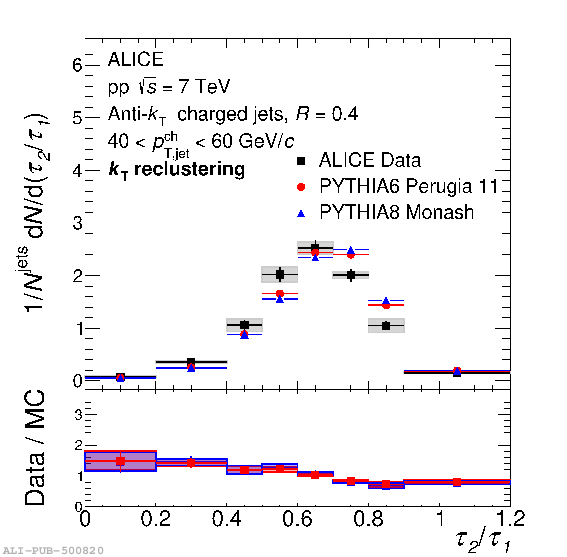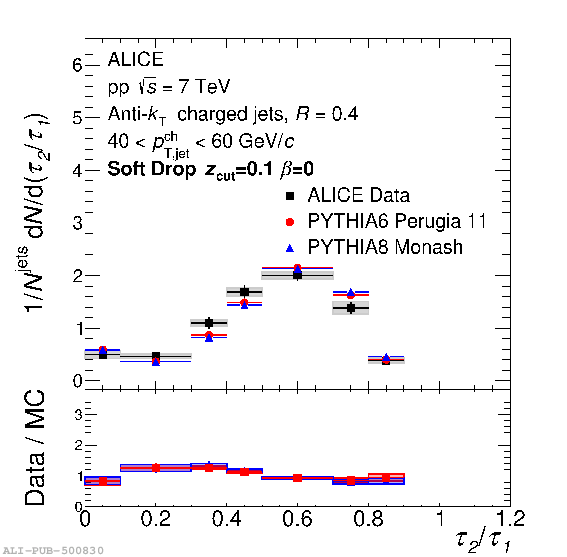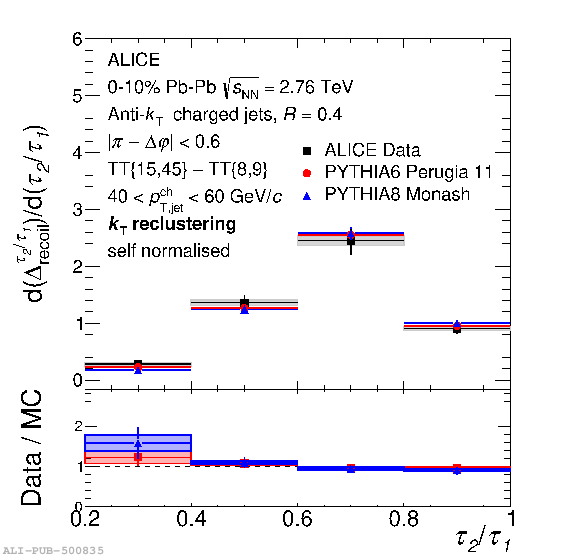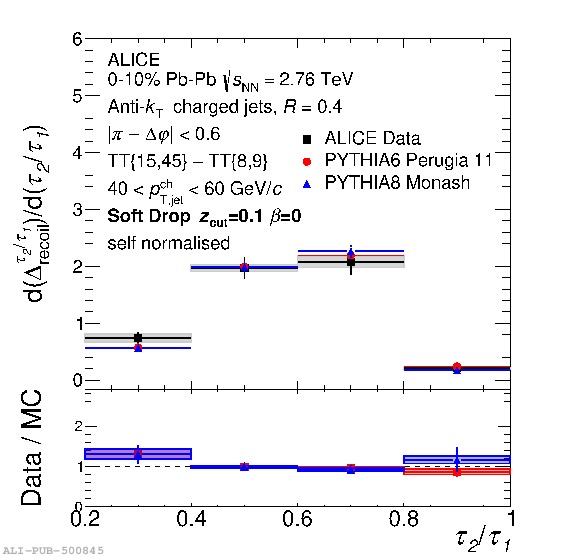The ALICE Collaboration reports the first fully-corrected measurements of the $N$-subjettiness observable for track-based jets in heavy-ion collisions. This study is performed using data recorded in pp and Pb$-$Pb collisions at centre-of-mass energies of $\sqrt{s} = 7$ TeV and $\sqrt{s_{\rm NN}} = 2.76$\,TeV, respectively. In particular the ratio of 2-subjettiness to 1-subjettiness, $\tau_{2}/\tau_{1}$, which is sensitive to the rate of two-pronged jet substructure, is presented. Energy loss of jets traversing the strongly interacting medium in heavy-ion collisions is expected to change the rate of two-pronged substructure relative to vacuum. The results are presented for jets with a resolution parameter of $R = 0.4$ and charged jet transverse momentum of $40 \leq p_{\rm T,\rm jet} \leq 60$ GeV/$c$, which constitute a larger jet resolution and lower jet transverse momentum interval than previous measurements in heavy-ion collisions. This has been achieved by utilising a semi-inclusive hadron-jet coincidence technique to suppress the larger jet combinatorial background in this kinematic region. No significant modification of the $\tau_{2}/\tau_{1}$ observable for track-based jets in Pb--Pb collisions is observed relative to vacuum PYTHIA6 and PYTHIA8 references at the same collision energy. The measurements of $\tau_{2}/\tau_{1}$, together with the splitting aperture angle $\Delta R$, are also performed in pp collisions at $\sqrt{s}=7$ TeV for inclusive jets. These results are compared with PYTHIA calculations at $\sqrt{s}=7$ TeV, in order to validate the model as a vacuum reference for the Pb$-$Pb centre-of-mass energy. The PYTHIA references for $\tau_{2}/\tau_{1}$ are shifted to larger values compared to the measurement in pp collisions. This hints at a reduction in the rate of two-pronged jets in Pb--Pb collisions compared to pp collisions.
JHEP 10 (2021) 003
HEP Data
e-Print: arXiv:2105.04936 | PDF | inSPIRE
CERN-EP-2021-082

